VICTORIA has just experienced its wettest start to a year since records began early last century, New South Wales has been lashed by phenomenally heavy rainfall and Queensland’s rainfall average during December was 22 percent above the mean range.
The rain has been gratefully received by many farmers and graziers across the country and confidence has returned, but it was not predicted.
Rather, Bureau of Meteorology forecasts warned from as early as March that Australia was tracking towards a hotter and drier El Nino-influenced summer.
Forecast maps coloured deep brown from coast to coast and mainstream media headlines warning of a “super” El Nino added to the sense of doom.
Livestock producers, still haunted by the savage drought of 2019, began flooding markets with sheep and cattle, sending prices crashing despite many paddocks still having good grass and water.
The panic selling that eventuated has been widely viewed as the key driver of a 60 percent plunge in the cattle market’s primary indicator the EYCI through 2023.
Another event that stands out for many farmers was the winter of 2014 a positive forecast for above average rainfall in Queensland which triggered widespread plantings on marginal moisture and decisions to hold stock back, only to see almost no rain at all.
The national situation prompted Meat & Livestock Australia managing director Jason Strong to warn livestock producers to keep weather and El Niño probability data in perspective with actual conditions and avoid the ‘weaponising’ of forecasts to negatively affect industry sentiment.
It may be a simplistic approach, but directly comparing the bureau’s three-monthly seasonal outlook rainfall forecasts in 2023 with the actual results at the end of each three-month period highlights the hits and misses inherent in longer term forecasts:
Longer-term forecasts: Vital tool, or unreliable distraction?
A CSIRO climate intelligence expert this week explained to the ABC that without any forecast, there is an “equal chance it could be a wet, dry or normal year”.
“So when we know it’s going to be an El Niño it changes that probability so the segment for dry conditions on that chocolate wheel is much larger, and the wet is smaller.”
The BOM says longer-term forecasts of seasonal statistics, such as whether rainfall or temperature will generally be above or below median, “are possible to accurately predict”.
“Advances in modelling and computing power have allowed us to look at shorter timescales, making possible accurate predictions for sub-monthly timescales”.
No one would seriously suggest BOM should be able to get it right all the time.
However, faced with long term forecasts of limited reliability, some farmers have commented in private conversations with Beef Central this week that having no longer term forecasts at all may be preferable, removing the distraction and leaving decisions on whether to plant, buy or sell purely to what grass or moisture is in front of them at any given time.
Distorted depictions
In June last year SA cattle producer Tim Burvill called out the fear of drought and panic selling that followed El Nino forecasts and associated media coverage, when pasture conditions across many parts of the the country were far from dire.
“You would swear reading the media that the whole of Australia is already in the grips of drought due to a ‘Super’ El Nino (which by the way is a made up term),” he said at the time.
Farmers also question the colour schemes used to illustrate outlooks.
Even when forecasts are accompanied by written disclaimers declaring they are based on low historical outlook accuracy, accompanying illustrations with maps painting the entire continent in deep and dark shades of brown leave little room for interpretation other than an expectaiton of severe drought conditions ahead.
“Using things like dramatic colours can over-dramatise the weather forecasts, it is no wonder to me that people who live in cities have a far different perspective on climate change and global warming and drought than people that actually rely on it for their livelihood,” Tim Burvill noted at the time.
BOM forecasts “really good decision making tool”
Many farmers also defend the value of BOM forecasts.
Central Queensland producer Melanee Leather told Beef Central last year that she believed BOM was still a really good tool for decision making. Ms Leather had recently completed a weather forecasting school through the University of Southern Qld’s North Australia Climate Program.
“It was really good to learn what the forecasts mean and really understand what they are saying,” Ms Leather said.
“I think BOM is really good at forecasting, but it is not always good at communicating those forecasts. I have noticed they use wording to try and simplify the forecasts that actually them more complicated – which makes it more important for producers to get educated about weather forecasts.”
No two El Nino events are the same
Dr Andrew Marshall has moved from BOM to take the role as the lead of the NACP. He said the forecasts were based on what was known about the climate drivers.
“In summer, El Niño typically increases the chance of warmer than average days across much of the eastern half of the country, and drier than average conditions for north-eastern Australia,” Dr Marshall said.
“For the rest of Australia, the influence of El Niño on rainfall usually reduces during summer, especially in the east.
“No two El Niño events are the same, and their impact on Australia varies. Around half of the past El Niño events have included heavy rainfall events, particularly across parts of eastern Australia.”
Dr Marshall said BOM’s summer outlook reflected the chance of rain.
“The Bureau’s long-range forecasts for summer, issued on 23 November, indicated a high chance of warmer than usual days and nights across Australia, and below average rainfall for the northern tropics,” he said.
“However, the outlook for most of Australia indicated neutral to increased chance of wetter than usual conditions for summer.
“Rainfall events in eastern Australia during December and January were likely influenced by the presence of a positive Southern Annular Mode (SAM), combined with unusually high temperatures in the Tasman Sea. During summer, positive SAM increases the chance of above average rainfall for parts of the east.”
What the Bureau actually said about El Nino in 2023:
On March 14, 2023, the Bureau announced that there was a 50 percent change that an El Nino may develop in 2023, and moved the ENSO dial to the “El Nino Watch” phase.
On June 6 the Bureau shifted the ENSO outlook to “El Nino Alert”, reporting there was approximately a 70 percent change of El Nino forming in 2023.
While it was no guarantee an El Nino would occur, there was roughly three times the normal chance an El Nino would occur, BOM said at the time.
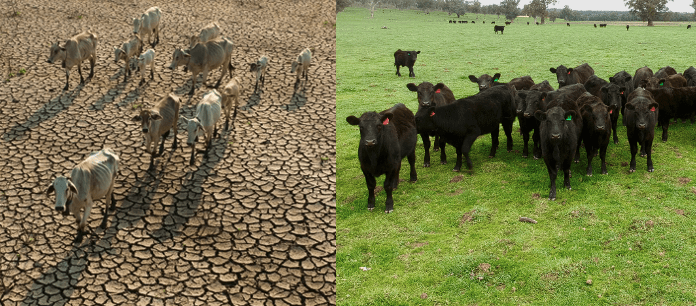 On July 4 the World Meteorological Organisation declared that an El Nino had developed in the tropical Pacific, forecasting a 90pc probability of an El Nino event occurring in the second half of 2023, to be “at least of moderate strength”, and that it would “greatly increase the likelihood of breaking temperature records and triggering more extreme heat in many parts of the world and in the ocean”.
On July 4 the World Meteorological Organisation declared that an El Nino had developed in the tropical Pacific, forecasting a 90pc probability of an El Nino event occurring in the second half of 2023, to be “at least of moderate strength”, and that it would “greatly increase the likelihood of breaking temperature records and triggering more extreme heat in many parts of the world and in the ocean”.
Australia’s Bureau of Meteorology was more cautious and waited more than two months before formally announcing that the criteria to required to declare an El Nino had been met.
That announcement came on September 19 when the Bureau formally declared that an El Nino and a positive Indian Ocean Dipole were underway, meaning that the chance of below average rainfall was more likely over much of the continent and higher temperatures across the southern two-thirds of the country.
“The Bureau’s three-month forecast for Australian rainfall and temperature have been indicating warm and dry conditions for some time,” BOM Climate Manager Dr Karl Braganza said at the time.
“An established El Niño and positive IOD reinforces our confidence in those predictions. Based on history, it is now also more likely that warm and dry conditions will persist over eastern Australia until autumn.”
He added that while around two-thirds of Australia’s driest years on record were during El Niño, “no two El Niño or IOD events or their impacts are the same”.
BOM’s forecasts nowhere mentioned terms such as “Super” El Nino, but such terms began appearing in mainstream media headlines soon after initial forecasts of El Nino emerged last year. Some early examples are here and here.




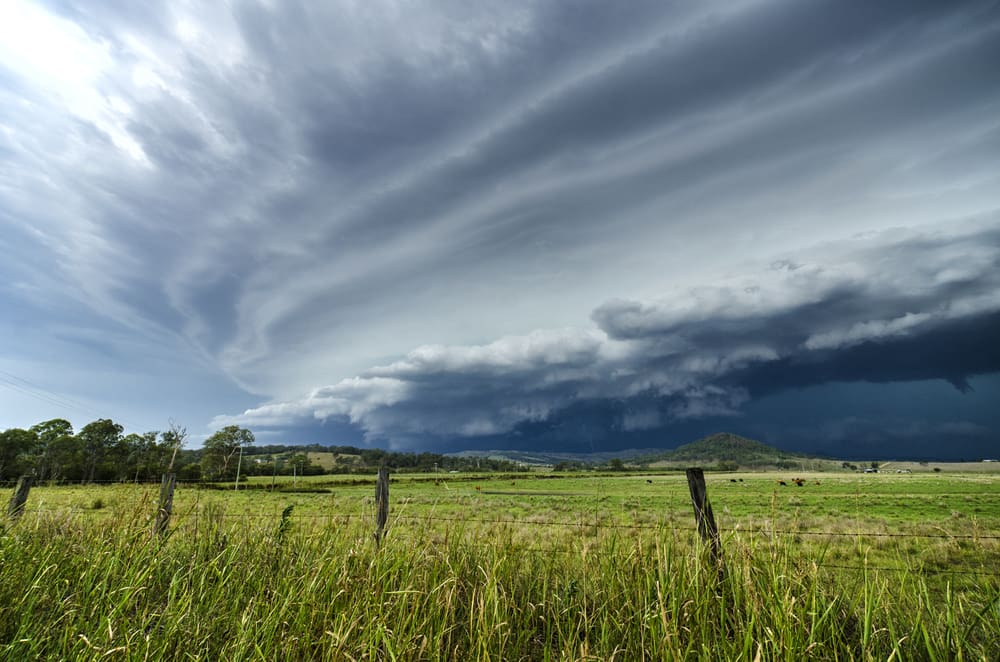
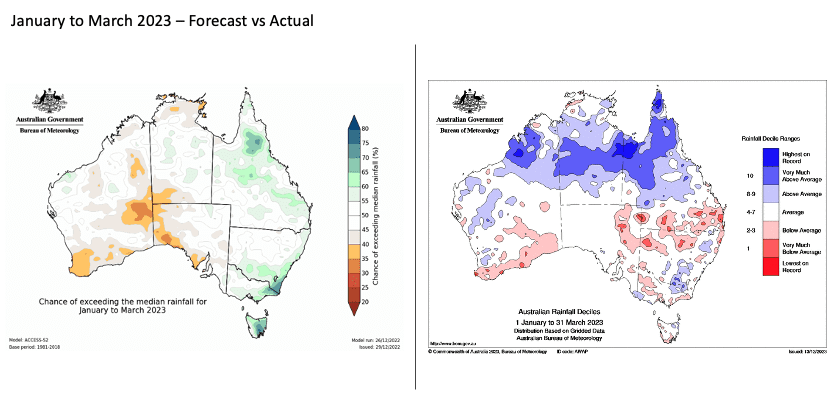
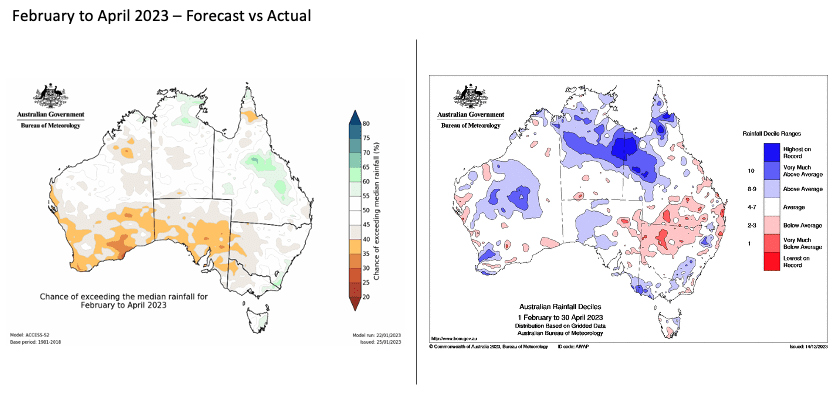
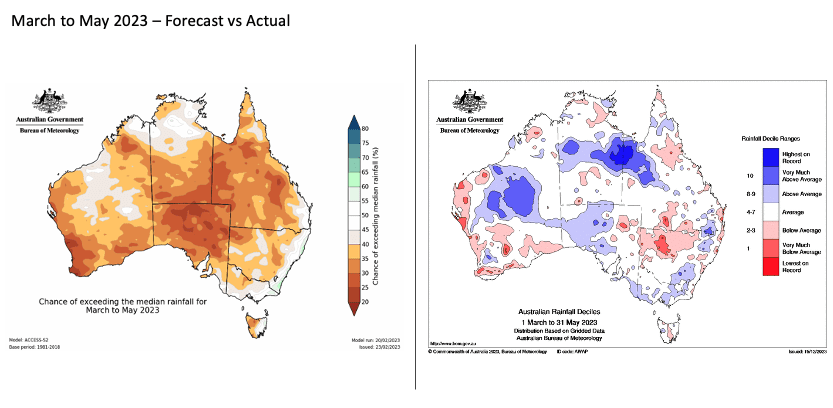
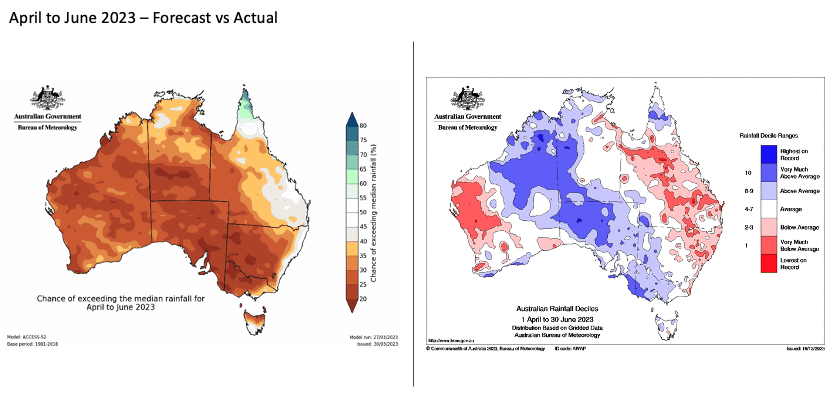
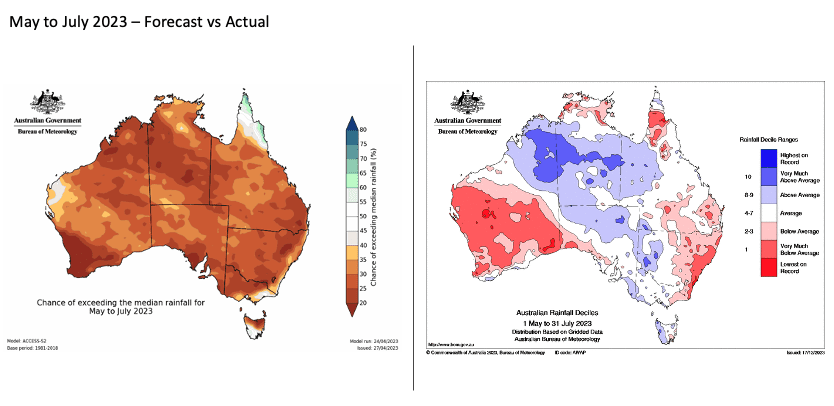
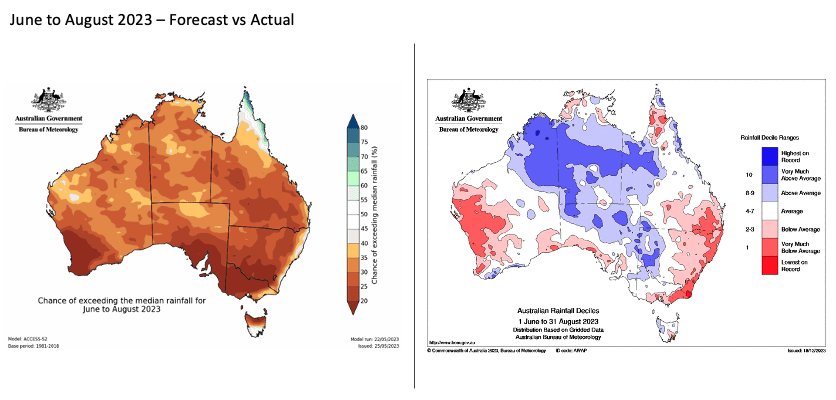
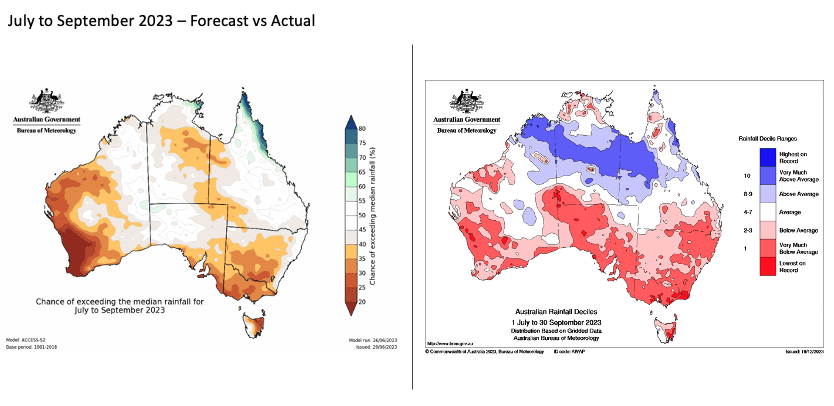
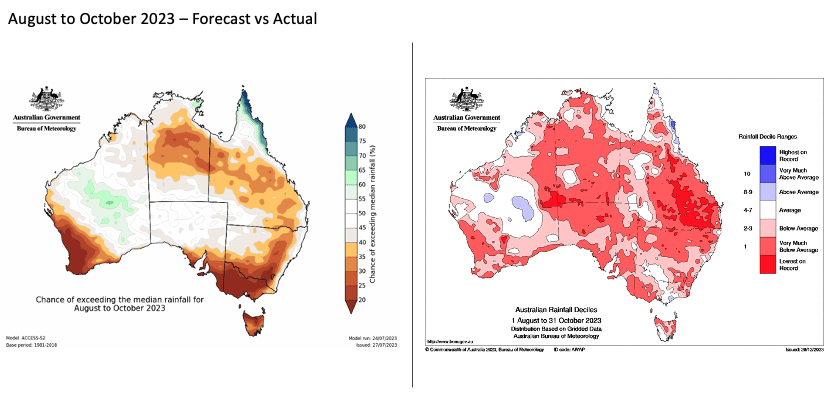
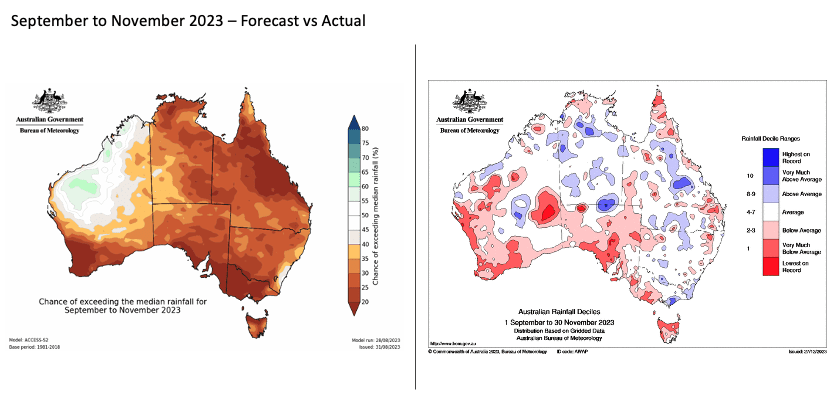
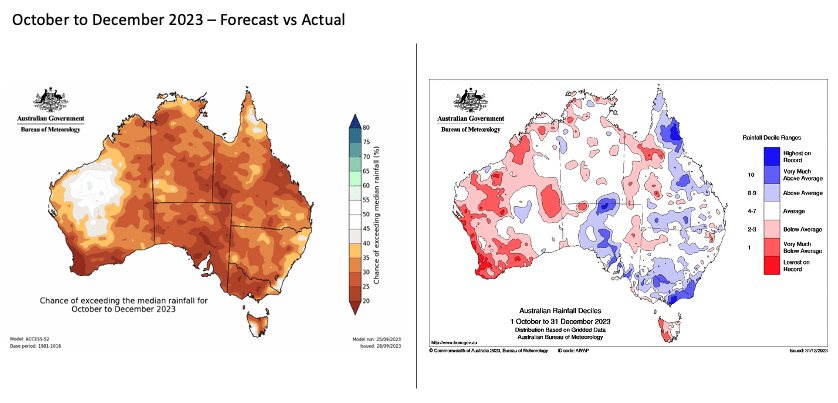
Excellent article, with damming supporting evidence by Beef Central on the failures of the Bureau of Meteorology. Loss of older experienced forecasters from the BOM, over-reliance on new whiz-bang computer systems and the inane belief that CO2 is the principal driver of climate are all contributing factors. However, possibly the biggest failure is the result of BOM’s total disregard for the gravitational forces created by the movements of the planets, the sun and the moon. Whilst sunspot activity goes in irregular cycles, the movement and positioning of the planets in relation to Earth is known and can be calculated for extensive periods ahead. That’s how Inigo Jones, who died in the 1950s, correctly forecast the Centenary drought some 50 years later and how W.D. Gann, perhaps the greatest commodity trader on Wall Steet, who also died in the 1950s got his trades, including wheat, correct 90 percent of the time; by understanding the planetary movements and their effect on the weather and thus crop yields. Today, city people think the BOM is clever if it gets the forecast correct for the next four days, and so it is as if the only importance of the forecast is to determine whether you need to take your coat and umbrella to work or not.